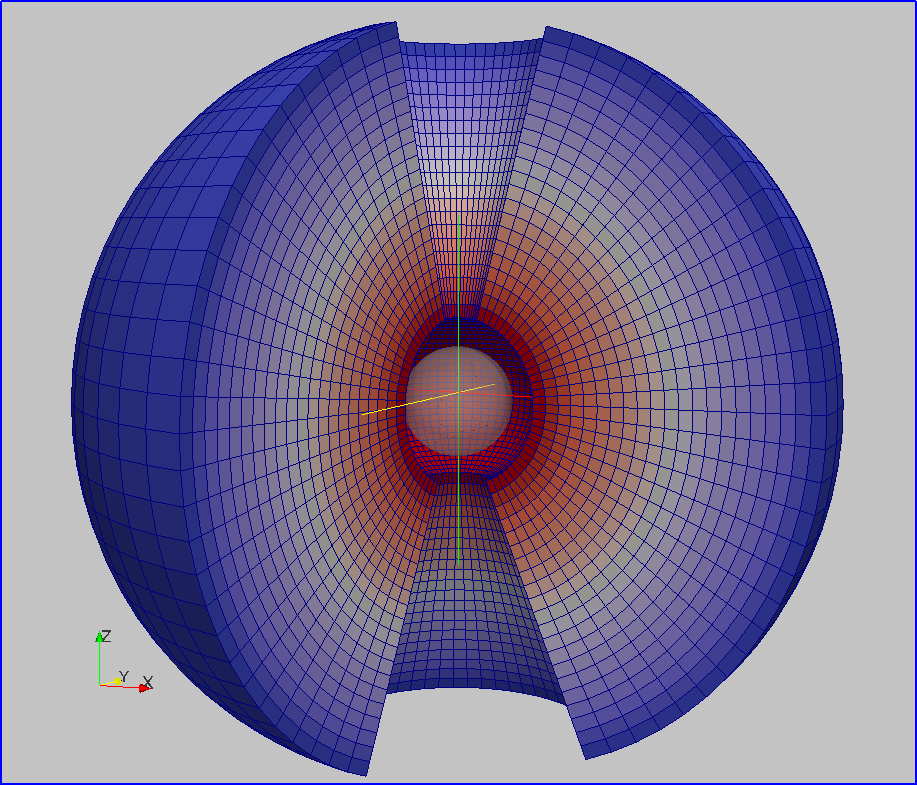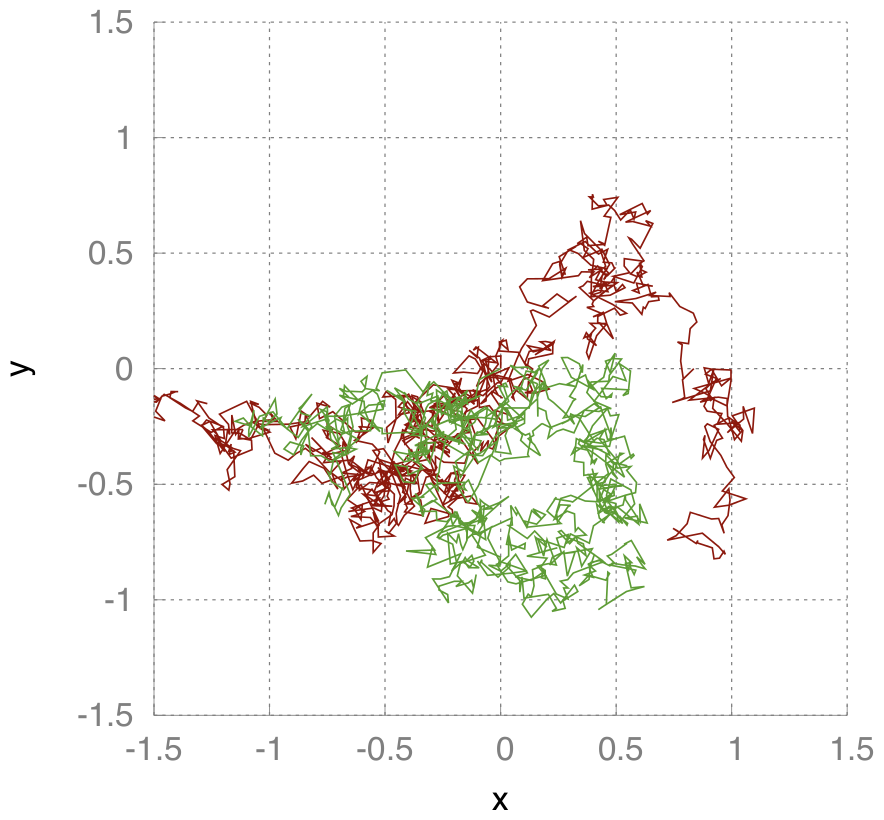Numerical Tools

|
| Spherical grid cutout, visualized using Paraview. [click to enlarge] |
Due to both the non-linearity of the equations and the complexity of the physical setting, the prospect of further analytical progress is rather limited. Computer algebra systems such as Maple and Mathematica are useful tools which can help to handle complicated equations and to visualize the results. In most cases, however, direct numerical simulations become mandatory.
Finite-volume methods
Particularly in the field of MHD, grid-based finite-volume methods are
enjoying much popularity. The idea is to subdivide a particular volume of
physical space into a finite number of "cells" in which quantities such as
density and pressure are assumed uniform. The differential equations are
then transformed into difference equations which compute an estimate of the
physical values within a given cell at time ti as a function
of the values at some earlier time ti-Δt. More cells
generally mean better accuracy but require more CPU time and RAM storage to
handle.
A vast number of discretisation schemes exist, and the one most appropriate
for a given problem/ purpose can often only be identified on the basis of
trial-and-error tests.
At our group, we are fortunate to have access to CRONOS, a
parallelized, fully 3-D MHD code, which has already been successfully
employed for astrophysical problems in various settings, such as interstellar
turbulence, accretion disks, and transient structures in the solar wind
(corotating interaction regions and coronal mass ejections).
Stochastic differential equations
For diffusion problems, the numerical modelling of stochastic differential equations (SDEs) is becoming increasingly popular as an alternative to the direct (i.e. grid-based) evaluation of the underlying diffusion equations. The numerical realisation of this concept is accomplished by the use of a large number of so-called 'pseudo particles', each of which is traced through a given domain and subjected to a random spatial displacement, the direction and width of which is drawn from a suitable random distribution. SDE solvers require a large number of pseudo-particles to achieve results statistically meaningful enough to be considered an adequate approximation to the real-world target situation. Fortunately, they are easy to parallelize on multiple computers.
Visualisation
The mostly three-dimensional (3D) nature of the astrophysical settings under investigation can makes the analysis and intuitive visualisation of the obtained results a demanding task. We rely on a suite of self-written collection of IDL routines, and have at times also made use of the Paraview package for this purpose. Additionally, 3D sketches and illustrations have in the past been created using Cinema-4D.


